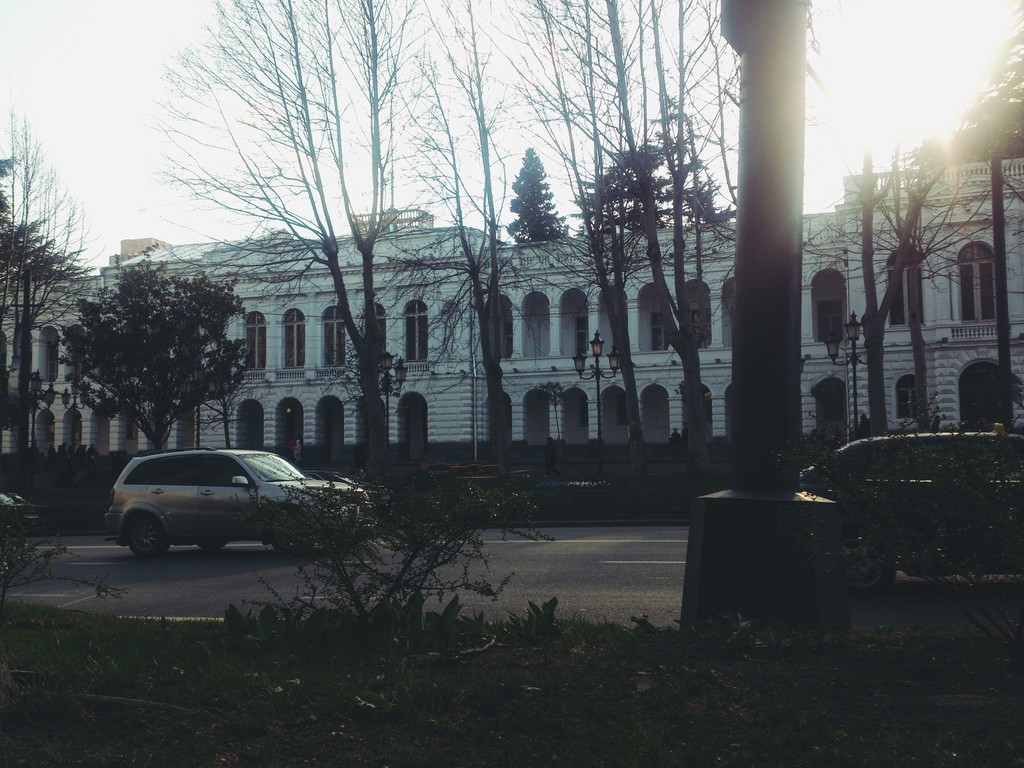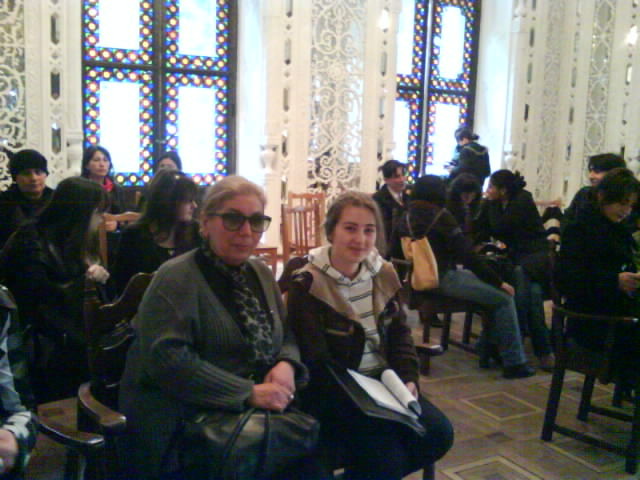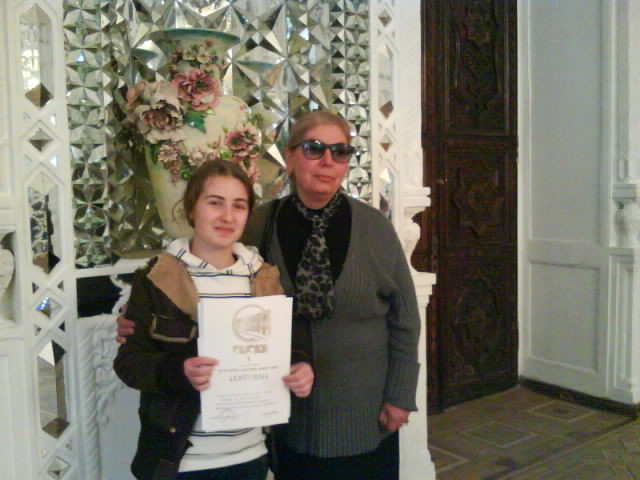My experiences in Tbilisi Youth Palace

I really want to share my happiness and tell you about my experiences in the Tbilisi Youth Palace, where I have spent some years on conferences and stuff.
My participation in the Educational-Creative Conferences
It was my teacher at school, who encouraged me and introduced the idea of writing little stories and then getting them to those conferences. She is a teacher at my former school and she teaches Georgian language and literature. So, she was really eager to get my writings to public, as she used to give us some homeworks to write about some topics and we were to write it in a freestyle. Now, she wanted me to collect all my writings and put them together and send them to the judges.
So, there are some stages to get to the Youth Palace. First, you have to get your writing to be one of the best in your school, so it can go on this region conference, then you will be able to present your writing to the judges on that region conference and if they like it, you are able to be in a final _ that is in this very Youth Palace and there are students from all over Georgia and so, imagine, there are so many people participating in the conference and at the end there are just up to 30 people, I guess, who get to the final!
I think, my first participation in that kind of conference was in 2009, when I was somewhere in the 9-th or 10-th grade, and so I was 15 or 16 years old then. I was inexperienced and I was not really nervous about the whole thing, but still, I was excited.
My teacher supported me greatly all the way from the beginning to the end and I really appreciated that. She supported me wherever I went and I really love her for that, too, besides other things that she has done for me. I use to visit her sometimes and she gladly receives me and she is always interested in how I'm doing and how my things are going.
So, I remember, the first time I participated in the conference, I had all my poems and stories collected and sent them. Soon I received a notification, that I was to go to the region conference and present my work to the judges. It was held there in Sagarejo public school No. 1 and all the participants from the regions were there with their worked and stuff.

Participating in the conference
There are some sections in the conference and you should choose up to 3 and send your works. And if you want to participate in it, they announce the conference dates and deadlines in October or something and the deadline usually is till the end of January. Then the region conference is in February or in the beginning of March and then the final in the Youth Palace is held somewhere in April or May. You should have a school teacher as your guide to your work and you can write your work alone or with a partner student.
Since that first participation, I participated in the conference every next year till the graduation, and each time I had a lot of fun besides presenting my works to the judges and I made some new friends and so on.
If anyone wanted to participate in the conference, it’s called the Educational-Creative Conference, and it’s the 70-th one in 2016, so if you wanted to participate in it in 2016, there was this announcement in September 2015 and it had all the requirements and dates in it. So there are 3 stages, as I’ve already said and the first one _ schools conference was held in November, region conference was in December and the final is in April 2016. If anyone wants to attend the final, they can just go to the Youth Palace and go and sit in whichever section they want and just listen to the speakers.
The age limit is about classes, and by that I mean that students from 8-th to 12-th grades can participate in the conference.
The sections of the conference are:
- Georgian language
- Folklore
- Literature
- Foreign languages (English, French, German, Russian, Greek)
- Mathematics
- Informatics
- International relationships
- Jurisprudence
- Psychology
- Journalism
- Sports
- History
- Ethnography
- Film and photo
- Ecology
- Environmental protection (biology, chemistry, agro-biotechnologies)
- Physics
- Astronomy
- Radioelectronics
- Engineering graphics and architecture
- Geography-geology
- Tourism and mountaineering
- Study of art
So, as you see, there are lots of sections that students may be interested in and the conference gives them a great chance to share their interests and write about them and give presentations and stuff.
About Georgian National Youth Palace
It was originally the Viceregent Palace and was a residence of the Imperial Viceroy of the Caucasus. It’s located on Rustaveli Avenue in Tbilisi near the metro Freedom Square.
Well, on the place where now this building is, was built a small building in 1802, which was then destroyed and there was built another one in 1807. That was a classical Russian design and it was the most distinguished building in that period. Then the palace was demolished several times, and it was built in 1818 again by architect Braunmiller. The building became larger with larger rooms and halls and pool table, “Winter Garden”, etc.
In 1845-1847 years architect and academic Nikoloz Semionov changed the palace’s design.

The Mirror Hall was made in 1869 by Simonson and that hall was just an amazing place in the whole palace. Also, that is the place my conference was held when I participated in the Creative Section. This is a splendid hall with all those mirrors and chandeliers and a grand piano and stuff like that. Everything is like gilded and you just feel yourself in some royal meeting.
In 1937 the building was “given” to Tbilisi children and it was called “Pioneers and Students’ House”, but the palace was officially opened on May 2, 1941 and that is considered as a birthday date of the palace. So, you may hear not “Youth Palace”, but “Pioneers’ Palace” when talking to people, because they still call the palace that, and you should not be surprised.
The palace has its library and it was founded even before the palace was built. The library was considered as the central library for children for 35 years. The library with its inventory was given to the Pioneers’ Palace in 1941. By that time the library had 30, 000 books. Nowadays the library has a readers hall and a book depository. The library serves 3, 000 readers, most of which are students who work in the palace clubs.
There are many events held in the palace, such as analyzing books, poetry nights, competitions, meeting with writers and publishers, exhibitions, etc.
Photo gallery
Content available in other languages
Want to have your own Erasmus blog?
If you are experiencing living abroad, you're an avid traveller or want to promote the city where you live... create your own blog and share your adventures!
I want to create my Erasmus blog! →

















Comments (0 comments)